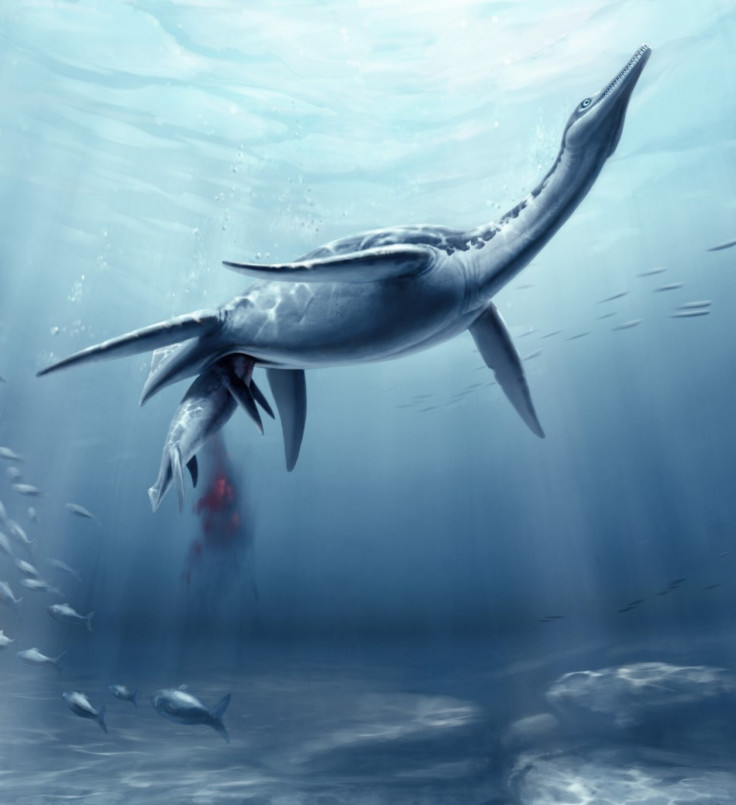Researchers Say Ancient Sea Dinosaur Was Expecting

Researchers have discovered that a fossil of an ancient sea creature includes its unborn embryonic baby.
The creature goes by the name of Polycotylus latippinus (plesiosaur) and it's a 78-million-year-old, 15.4-foot-long sea carnivore. Researchers Dr. F. Robin O'Keefe of Marshall University and Dr. Luis Chiappe of the Natural History Museum's Dinosaur Institute say the fossilized dinosaur contained the embryo of its unborn offspring including the baby's ribs, 20 vertebrae, shoulders, hips, and paddle bones.
The findings were compiled in a paper that was published in the journal Science.
The discovery has helped researchers determine that the plesiosaur gave live births in the water, rather than hatching their offspring from eggs on land. Because the unborn baby plesiosaur was so big, this confirms the scientists' hypothesis that the sea creature gave live births.
"Scientists have long known that the bodies of plesiosaurs were not well suited to climbing onto land and laying eggs in a nest," Dr. O'Keefe stated. "So the lack of evidence of live birth in plesiosaurs has been puzzling. This fossil documents live birth in plesiosaurs for the first time, and so finally resolves this mystery."
The slow swimming plesiosaur was likely a social creature, much in the vein of a dolphin rather than a reptile. The researchers have used the recent discovery of the embryo to confirm this hypothesis on the creature.
"Many of the animals alive today that give birth to large, single young are social and have maternal care. We speculate that plesiosaurs may have exhibited similar behaviors, making their social lives more similar to those of modern dolphins than other reptiles," O'Keefe said.
The plesiosaur was first discovered in England in the early 19th century and was among the first fossil vertebrates to be found by scientists. Numerous discoveries have been made since the first one. The one with the unborn baby was found in 1987 by Charles Bonner on the Bonner Ranch in Kansas.
It was nearly complete minus part of the creature's neck and skull. It is currently on display at recently unveiled, 14,000 sf Dinosaur Hall at the Natural History Museum, which includes 300 fossils and 20 complete mounts of dinosaurs and sea creatures.
Finding the plesiosaur in Kansas is not a shock since according to researchersx the creature lived in a tropical body of water that split North America during the Cretaceous period.
© Copyright IBTimes 2024. All rights reserved.





















